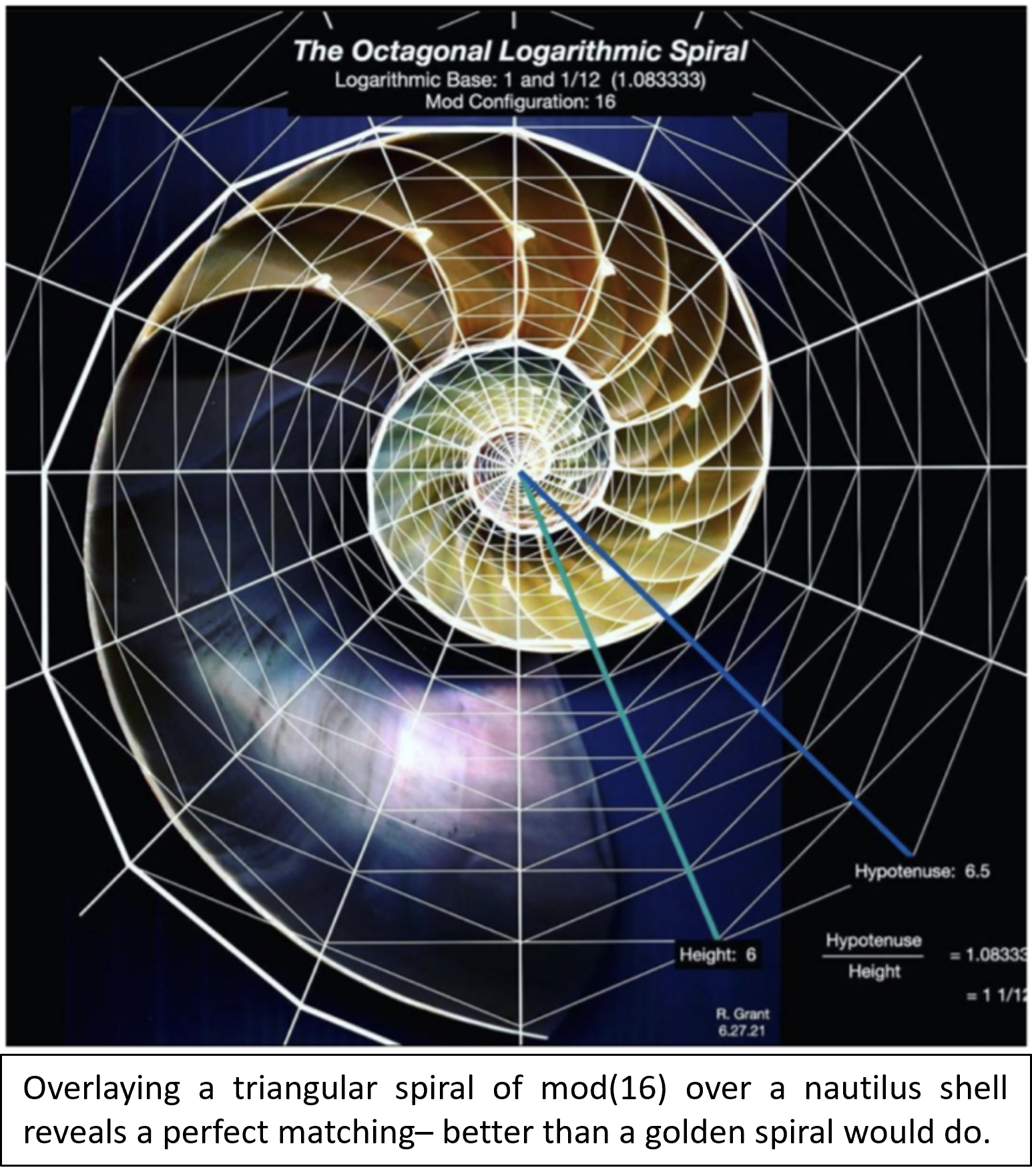Novel Geometric Model Allows for Better Categorization and Prediction of the Properties of Natural Spiraling Phenomena

By: William Brown, Resonance Science Foundation biophysicist
Robert Grant and his research team Talal Ghannam and Amanda Kennedy have published a study describing a novel class of triangular spirals based on right triangle polygonal modular formations. These new forms are shown to match many natural spiraling phenomena better than any previously proposed model. The improved model will allow for better categorization and prediction of the properties of numerous spiraling formations manifested in the natural world, and hints at a possible fundamental role for right triangular geometry in morphogenesis and the natural laws of the physical universe.

Spiral formations abound in nature, from the micro to the macro, from the spiraling oscillation of electromagnetic waves, to molecules like the information-carrying polymer of DNA, to the body patterning of organisms, tornadoes, hurricanes, planet-sized vortices on Jupiter, and up to the cosmological scale where spiral galaxies can be observed. The importance of the spiral formation in nature was discussed in our RSF report The Morphogenic Field is Real and These Scientists Show How to Use It to Understand Nature, in which researchers Chris Jeynes and Michael Parker describe mathematically how the double helical and double logarithmic spiral trajectories in spacetime are maximum entropy states—that is to say that among all possible ways a system can be configured, the spiral and double helix represent a maximization of entropy, and a system will always go to the state that maximizes entropy, making this configuration one of the most stable or equilibrium condition available to the system, and hence the ubiquity of these structures in nature.
Jeynes and Michael are also able to use their holomorphic info-entropy model to predict the rotational curve of galaxies based on their holographic temperature (a function of the supermassive black hole at their center), accounting for the unexplainable rotational curve of galaxies without the need for dark matter. Grant sees a similar application where the triangular spiral formations are underlying the gravitational action. To read more about the work and other research being performed by Grant and his research team visit his website at Robert Edward Grant. The full research paper can be read on arxiv at A Novel Geometric Model of Natural Spirals Based on Right Triangle Polygonal Modular Formations.



